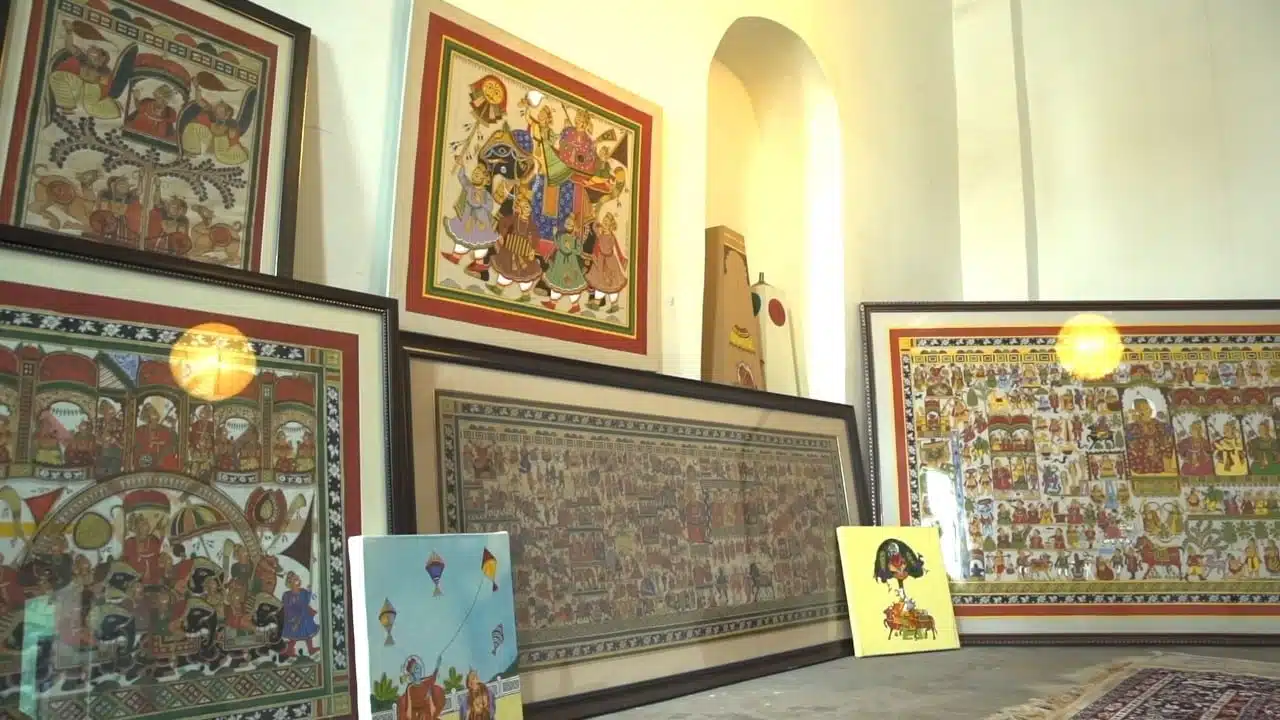Phad is an Indian artform that originated around 700 years ago in Rajasthan. Meaning “fold” in the regional dialect, the painting is made on large scrolls that are designed to travel with nomadic communities. The scrolls, unfolded and displayed at community events, depict stories of important folk deities, typically Devnarayan and Pabuji, and act as visual aids to accompany song, dance and story-telling performances. With very few physical temples of these deities, the scrolls come to “depict an entire temple,” as Phad artist and Etsy maker Vijay Joshi explains.
Joshi, who has been making Phad paintings since he was 9 years old, tells us how a work starts with the preparation of a “thick homemade parchment-type cloth”. The special preparation increases the durability of the canvas and stops it from cracking when rolled. The work is then painted using natural colours created from crushed minerals and rocks. “It is a long process which can take up to three months,” says Joshi.
Only a handful of working traditional Phad artists remain in India. In this film, Joshi, a 13th generation artist in his family line carrying the artform forward, gives us a glimpse into this rich tradition.
This film featuring Phad artist Vijay Joshi was produced by Etsy India as part of its commitment to highlight the artists behind the lesser-known Indian artforms on its platform. As a global marketplace for unique and creative goods, Etsy’s mission is to ‘Keep Commerce Human’ and use the power of business and technology to strengthen communities and empower people around the world.


